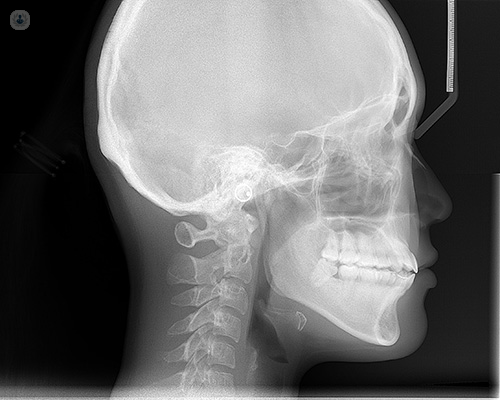Facial reconstruction surgery following trauma
Written by:Facial injuries can result from sports, road traffic accidents and violence, and can change the facial anatomy, as well as affecting the nerves, blood vessels, muscles and other forms of facial tissue. Mr Kavin Andi, a leading maxillofacial surgeon, explains the different types of facial trauma and how each can be treated with facial reconstruction surgery.
What events can lead to a person having facial reconstruction surgery?
The face is such an important part of our interaction with others. Facial injuries can impair an individual’s ability to eat, drink, speak and interact with others. Many studies have demonstrated how disfiguring facial injuries can have a profound effect on social and psychological well-being.
Sports such as football, rugby and cricket account for a high percentage of injuries amongst young adults. More severe injuries are seen as a result of road traffic accidents involving bicycles, motor-cycles, cars, vans and lorries. Other causes include assaults and domestic violence as well as falls, bites and other recreational activities. Injuries caused by gunshots or explosives are often associated with higher mortality and morbidity rates. Neck and head injuries are also closely associated with these types of high energy trauma.
What are the different types of facial trauma?
The face is an anatomically complex area concentrated with nerves, blood vessels and special senses which are important for day to day living.
Trauma may affect the bones, nerves, blood vessels, glands, muscles and skin:
- Bones:
Much of the design of the facial skeleton is focused towards absorbing the energy of impact in order to protect vital organs such as the eyes and the brain. The midface for example, often acts as an ‘air-bag’ during injury.
The lower jaw (mandible) often fractures in at least 2 places with injuries of the cheekbone (zygomatic complex) and orbital floor occurring frequently during blunt trauma to the face. The neck of the jaw joint (TMJ) may also be involved. Fractures of the top jaw (maxilla) may also occur causing a deranged bite which is common in mandibular and maxillary fractures with a degree of displacement.
- Nerves:
The major sensory nerve of the face – the trigeminal nerve may be injured causing numbness of one half of the face in discrete anatomical areas. Injury to one of the most important nerves of the face – the facial nerve – may cause weakness or drooping of the face which is not too dissimilar to a stroke. Nerve injuries involving the branches of the facial nerve should be urgently repaired, if appropriate, in order to maximise the potential for recovery.
- Blood vessels:
Uncontrolled haemorrhage from major facial arteries and veins may cause large haematomas or even exsanguination (severe blood loss) in severe cases. The blood supply to the face is formed by a rich anastomotic network crossing the midline. This accounts for the good healing properties of the face following reconstruction.
- Glands:
The parotid gland in particular is at risk during sharp and blunt injuries directed towards the side of the face in front of the ear. Most importantly, the main branches of the facial nerve travel through the gland and are prone to injury. Trauma to the gland often involves careful repair to ensure that the salivary duct maintains its integrity to prevent saliva leaking from the skin. Often, microsurgery techniques are used to repair or graft freshly cut branches of the facial nerve.
- Muscles:
The facial muscles are complex in their anatomy and their ability to form a significant number of different expressions. Careful repair with apposition of muscle ends to the correct layers is an important principle of reconstructive surgery. Often, muscles of the eye may become entrapped during an orbital floor fracture and these too must be carefully released in order to restore function.
- Skin:
The skin of the face varies in its composition and function from thin eyelid skin to the sebaceous oily skin around the tip of the nose and thick, mobile skin overlying the chin. Where lacerations occur, scars will follow and if they lie parallel to the relaxed skin tension lines, the scars will be less obvious after many months. Scars that form perpendicular to the relaxed skin tension lines will be thicker and more obvious and hence scar revision surgery aims to re-orientate these scars as much as possible to a more favourable orientation.
How do you plan for the reconstructive surgery?
Plain film x-rays are often all that is required to plan treatment for simple fractures involving the mandible or zygoma. If multiple bones are involved, cross-sectional imaging in the form of CT scanning is the modern standard of treatment. Adjuncts such as 3D segmentation/modelling and 3D printing are also useful where the original position of the bones has been completely lost.
How long does the whole process take?
Surgery for a fractured jaw or orbital floor may take 1-2 hours whereas complex midface and orbital injuries may take several hours. Where possible all injuries should be repaired at the same sitting.
What is recovery and aftercare like for someone following facial reconstructive surgery?
For mandible fractures patients often go home the same day after post-operative radiographs. Orbital floor reconstruction requires an overnight stay, mainly for monitoring for potential bleeding, whilst complex midface repairs may require 2-3 days of rest before discharge.
For enquiries about maxillofacial surgery, make an appointment with an expert.



